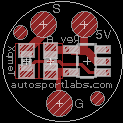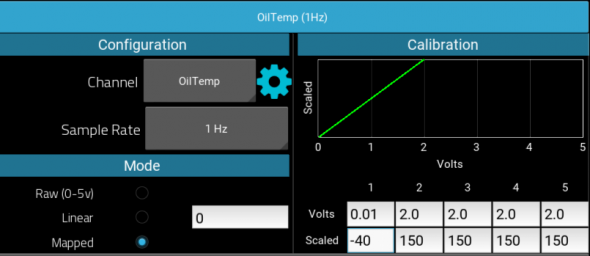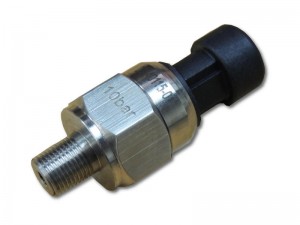
At Autosport Labs, we like sensors with a predictable, accurate, and linear output. Even though we can map the temperature curve of any sensor, adding enough smarts to sensors to provide linearity and accuracy is quite appealing. When the sensor can be designed as a powered, active sensor, you can also eliminate external components like the pullup resistors seen in passive thermistor sensors and simply wire it up with +5v, Ground and signal output – just like you’d see in your typical pressure sensor.
TMP36
One such active device is the TMP36. It supports a measurement range of -40C to +150C (-104F to 302F); a linear output of 10mv/C; an accuracy of +/- 2C , and a linearity of +/- 0.5C. It’s a simple device that only requires a couple of external components. Quite a while ago I whipped up a circuit board to host this device; the initial version was 1.5×0.25″ – a bit bulky, so this morning I changed it to a 0.4″ diameter circle. I made the 5v, Ground and Signal Output connections simple solder pads, with no signals or conductive traces going to the bottom of the board. This was done intentionally: the back side has no conductive pads exposed so it can lay flush against the measured surface.

Linear output
With a 10mv to 2.0v linear output across -40C to +150C (-104F to 302F) it’s easy to calibrate a RaceCapture/Pro analog input channel:

The low cost of this sensor and support components would yield a sensor device in the $10 range.
Try it out
You can find the open source design on our Github repository in case you want to order some boards and have a go at it!
Leveling up: incorporating it into a sensor body
How to mount this? A hackish way to do it would be to tape it to the surface being measured for a quick install. However, ideally this should be incorporated into a sensor body with a fitting like an NPT plug – something like you’d see with an oil pressure sensor or a regular thermistor based sensor – just with the guts of this active circuitry inside.

Got any ideas that may or may not include NPT plugs, off the shelf fittings or turning down some brass stock on a lathe? Or just hack it and aluminum-tape it to a surface? Tell us your ideas in the comments!
